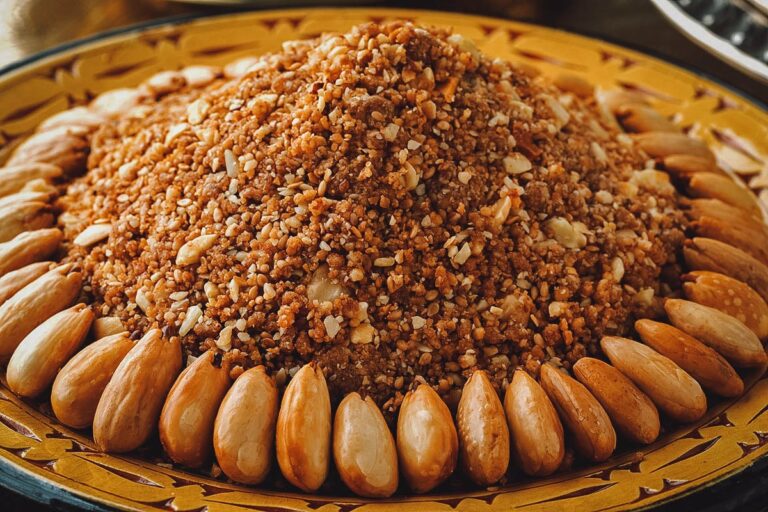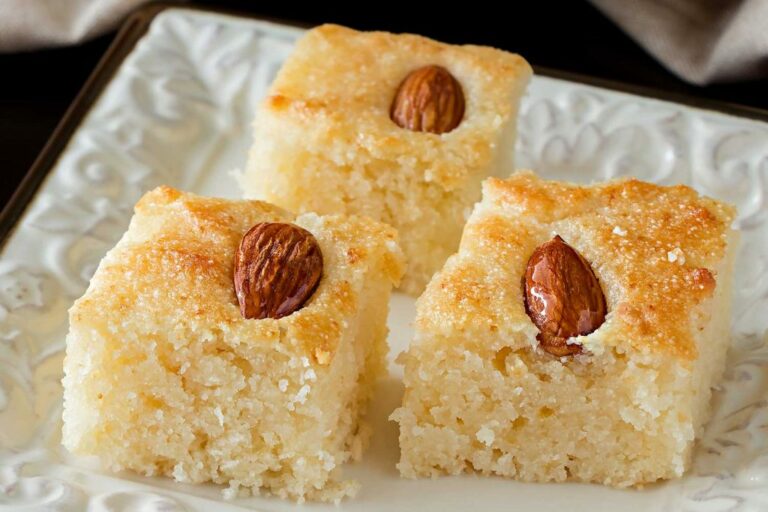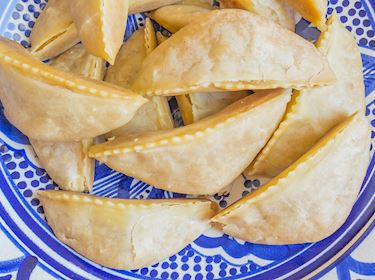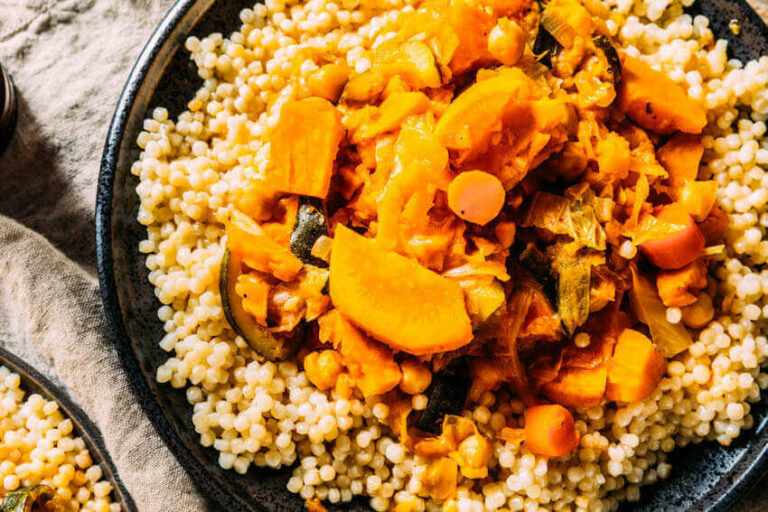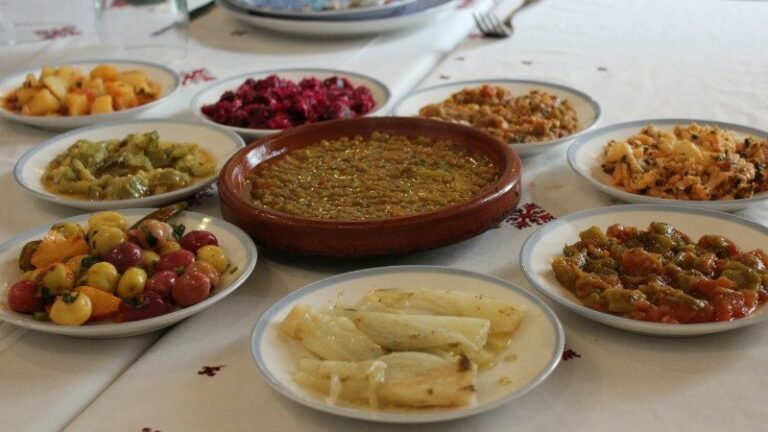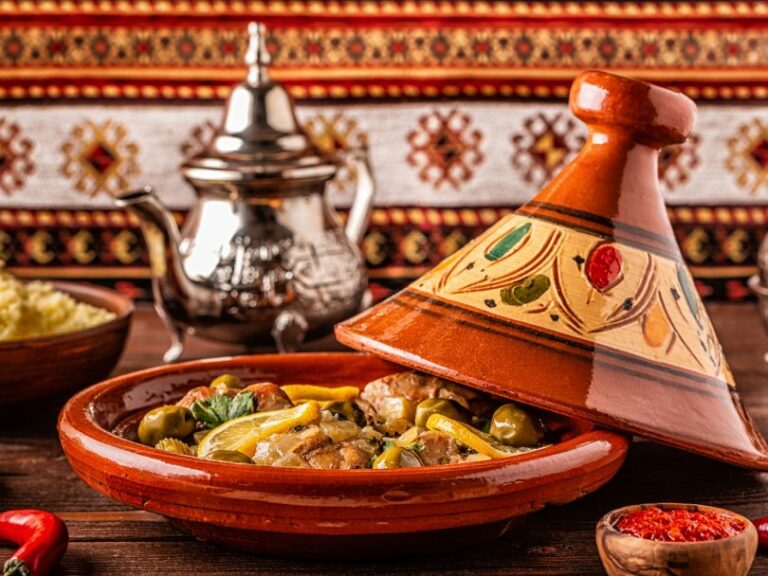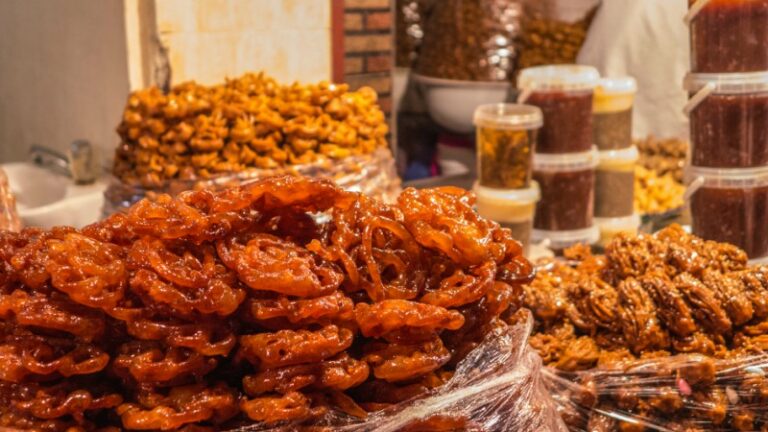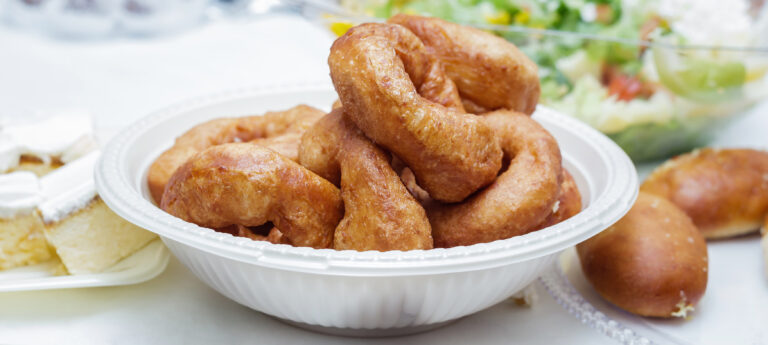Introduction: The diverse cultural influences on Moroccan cuisine
Moroccan cuisine is a reflection of the country’s diverse cultural heritage, which is a blend of Arab, Berber, French, and Jewish influences. These cultures have shaped the country’s food culture over the centuries, resulting in a unique and flavorful cuisine.
Moroccan cuisine is known for its aromatic spices, bold flavors, and hearty dishes that are a perfect representation of the country’s rich cultural heritage. The cuisine is characterized by the use of spices such as cumin, coriander, ginger, and cinnamon, which give Moroccan food its distinctive taste.
The Berber influence on Moroccan cuisine
The Berber people, who are indigenous to North Africa, have had a significant influence on Moroccan cuisine. They have contributed several staple ingredients to Moroccan dishes, including couscous, which is a staple food in the country. The Berbers also introduced the use of preserved lemons and olives, which are commonly used in tagines and salads.
Berbers are also known for their use of wild herbs and spices, which add depth and flavor to Moroccan dishes. One such herb is the wild thyme, which is used in meat dishes such as Marrakech-style lamb. The Berber influence is also evident in the use of harissa, a spicy paste made from chili peppers, garlic, and other ingredients, which is commonly used as a condiment in Moroccan dishes.
The Arab influence on Moroccan cuisine
The Arab influence on Moroccan cuisine is evident in the widespread use of spices and herbs, as well as in the preparation of couscous and tagine dishes. Arab traders introduced ingredients such as saffron, ginger, and cinnamon, which have become essential to Moroccan cuisine.
Arab cuisine is also characterized by the use of flatbreads and pastries, which have become a staple in Moroccan cuisine. Moroccan pastries such as baklava and sfenj are examples of Arab influences on Moroccan food.
The French influence on Moroccan cuisine
Morocco was a French protectorate from 1912 to 1956, and during this time, the French had a significant impact on Moroccan cuisine. French cooking techniques were introduced, and ingredients such as butter, cream, and cheese were incorporated into Moroccan dishes.
The French influence is most evident in Moroccan pastries, which are often made with puff pastry and filled with almonds, sugar, and cinnamon. The French also introduced coffee culture to Morocco, which is now an integral part of Moroccan social life.
The Jewish influence on Moroccan cuisine
Moroccan Jews have had a significant influence on Moroccan cuisine, particularly in the development of kosher cuisine. Jewish Moroccan cuisine is known for its use of slow-cooked meat, pickled fish, and preserved lemons, which are used in dishes such as tagines and salads.
Jewish cuisine has also influenced Moroccan pastries, such as the almond-filled coiled pastry called m’semen, which is similar to Jewish rugelach. Additionally, Moroccan Jews introduced the use of chickpeas and other legumes, which are commonly used in Moroccan stews.
Conclusion: The resulting uniqueness of Moroccan cuisine
Moroccan cuisine is a reflection of the country’s diverse cultural heritage, which has resulted in a unique and flavorful cuisine. The Berber, Arab, French, and Jewish influences have contributed to the use of spices, herbs, and ingredients that are essential to Moroccan cuisine.
The result is a cuisine that is characterized by hearty stews, aromatic spices, and delicious pastries. Moroccan cuisine is not only a reflection of the country’s cultural heritage but also a testament to its rich history and diverse influences.

